Mahadev. Shiva. The Destroyer of Evil. Called by different names but ultimately the Supreme Being. Being a Hindu, most people come across the term “Jyotirlinga” quite a few times while growing up. Shiva’s Jyotirlinga is highly revered among the Hindus. A Jyotirlinga is a shrine where Lord Shiva is worshipped in the form of a Jyotirlingam. Now you would ask what a Jyotirlingam is? It is the radiant sign of The Almighty. A Jyotirlinga is a holy representation of Lord Shiva. The word ‘Jyoti’ means light and ‘linga’ means sign. Jyotirlinga is the light of Lord Shiva.
Legend
The Legend of the “Jyotirlinga” is mentioned in the Vishnu Purana. When Lord Vishu and Lord Shiva were debating over who is supreme, Lord Shiva had produced a vast pillar of light and asked both of them to find the end of the light in both directions. To which, Lord Brahma lied that he found the end, but Lord Vishnu accepted defeat. Lord Shiva then cursed Lord Brahma that even though he is the creator of the Universe, he won’t be worshipped. And the Jyotirlingas here are believed to have appeared from that infinite pillar of light produced by Lord Shiva.
How Many Jyotirling are There in India?
There are 12 Jyotirlinga in India. It is believed that Lord Shiva first manifested himself on Earth on the night of the Aridra Nakshatra, thus the special reverence for the Jyotirlinga. There is no unique appearance to mark the Jyotirlingas. Many people believe that you can see these lingas as columns of fire piercing through the earth after you reach a high level of spiritual attainment. Originally there were 64 Jyotirlingas out of which 12 are considered to be highly auspicious and holy. The 12 Jyotirlinga temples in India take the name of the presiding deity. Each considered a different manifestation of Lord Shiva. The primary image of all these lingas is the “lingam” representing the beginning and end stambh pillar or the infinite nature of Lord Shiva.
12 Jyotirlingas in India with Their Location:
- Somnath Jyotirlinga in Gir, Gujarat
- Mallikarjuna Jyotirlinga in Srisailam, Andhra Pradesh
- Mahakaleshwar Jyotirlinga in Ujjain, Madhya Pradesh
- Omkareshwar Jyotirlinga in Khandwa, Madhya Pradesh
- Baidyanath Jyotirlinga in Deoghar, Jharkhand
- Bhimashankar Jyotirlinga in Maharashtra
- Ramanathaswamy Jyotirlinga in Rameshwaram, Tamil Nadu
- Nageshwar Jyotirlinga in Dwarka, Gujarat
- Kashi Vishwanath Jyotirlinga in Varanasi, Uttar Pradesh
- Trimbakeshwar Jyotirlinga in Nasik, Maharashtra
- Kedarnath Jyotirlinga in Rudraprayag, Uttarakhand
- Ghrishneshwar Jyotirlinga in Aurangabad, Maharashtra
1. Somnath Jyotirlinga, Gujarat
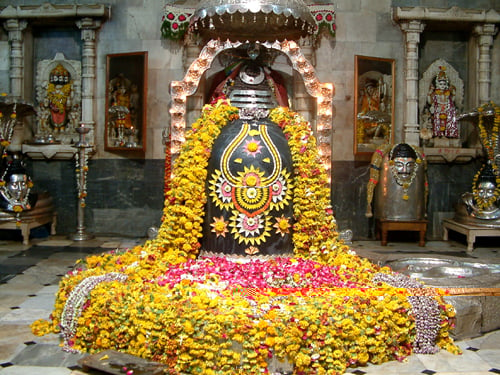
Considered to be the first of the 12 Jyotirlingas, the Somnath Temple in Gujarat is situated near Veraval in (Prabhas Kshetra) Kathiawad district. This jyotirling in Gujrat is a highly revered pilgrimage site in the country. There is a legend related to how this Jyotirling in Gujarat came into being. According to the Shiva Purana, the moon was married to 27 daughters of Daksha Prajapati, out of which he loved Rohini the most. Seeing his negligence towards the other wives, Prajapati cursed moon that it would lose all its radiance. A disturbed moon along with Rohini came to Somnath and worshipped the Sparsa Lingam after which he was blessed by Shiva to regain his lost beauty and shine. On his request, Lord Shiva assumed the name Somchandra and resided there eternally. He became famous by the name Somnath. Ever since the Somnath Jyotirlinga has been destroyed and rebuilt many times in history.
2. Mallikarjuna Jyotirlinga, Andhra Pradesh
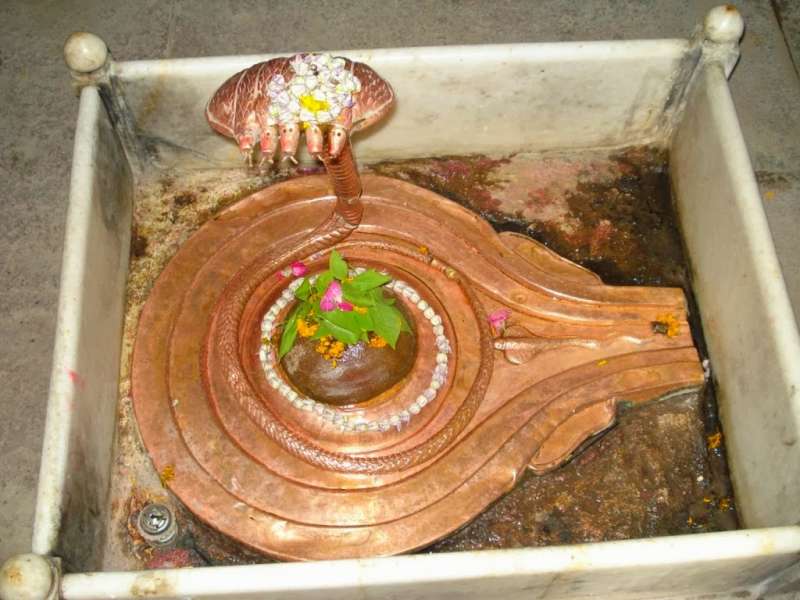
The Mallikarjuna Temple is situated on the Shri Shaila Mountain, on the banks of the Krishna River in the southern part of Andhra Pradesh. It is also known as “Kailash of the South” and is one of the greatest Shaivite shrines in India. The presiding deities at this temple are Mallikarjuna (Shiva) and Bhramaramba (Devi). According to the Shiva Purana, Lord Ganesha was married off before Kartikeya which left Kartikeya angered. He went away to the Kraunch Mountain. All the Gods tried to console him but in vain. Ultimately Shiva-Parvati themselves travelled to the mountain but were turned away by Kartikeya. Seeing their son in such a state they were very hurt and Shiva assumed the form of a Jyotirlinga and resided on the mountain by the name of Mallikarujna. Mallika means Parvati, while Arjuna is another name of Shiva. It is believed by the people that just seeing the tip of this mountain one is emancipated of all sins and becomes free from the vicious cycle of life and death.
3. Mahakaleshwar Jyotirlinga, Madhya Pradesh
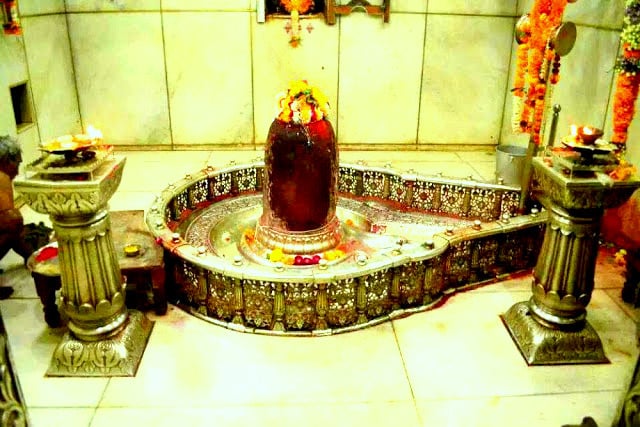
Mahakaleshwar Temple is located on the banks of the Kshipra River, in the dense Mahakal forest in Ujjain, Madhya Pradesh. This Jyotirlinga in Madhya Pradesh is an important pilgrimage site in Central India. There are a number of legends related to how this Jyotirlinga came into existence. According to the Puranas, there was a five-year-old boy Shrikar who was enthralled by the devotion of King Chandrasena of Ujjain towards Lord Shiva. Shrikar took a stone and started worshipping as Shiva. Many people tried to dissuade him in different ways, but his devotion kept growing. Pleased by his devotion, Lord Shiva assumed the form of a Jyotirlinga and resided in the Mahakal forest. The Mahakaleshwar Temple is considered significant by the Hindus for another reason. It is among one of the seven “Mukti-Sthal” – the place that can liberate a human.
4. Omkareshwar Jyotirlinga, Madhya Pradesh
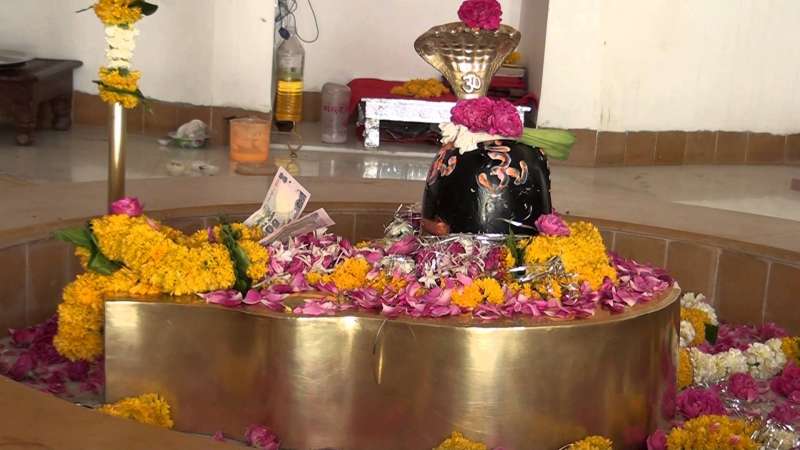
Omkareshwar Temple is one of the highly revered Jyotirlinga and is located on an island called Shivapuri in the Narmada River in Madhya Pradesh. The word Omkareshwar means “Lord of Omkara” or the Lord of the Om Sound! According to the Hindu scriptures, once upon a time, there ensued a great war between the Devas and Danavas (Gods and Demons), in which the Danavas won. This was a major setback for the Devas who then prayed to Lord Shiva. Pleased with their prayer, Lord Shiva emerged in the form of Omkareshwar Jyotirlinga and defeated the Danavas. This place is thus considered to be highly sacred by the Hindus.
5. Baidyanath Jyotirlinga, Jharkhand
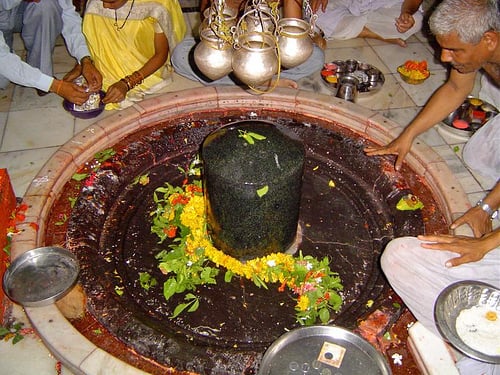
Vaidyanath Temple is also known as Vaijnath or Baidyanath. It is located at Deogarh in the Santal Parganas region of Jharkhand. This is one of the highly revered Jyotirlinga shrines, and the devotees believe that the sincere worship of this shrine relieves a person from all his worries and miseries. People believe that one attains moksha or salvation by worshipping this Jyotirlinga. According to a famous legend, the demon king Ravana meditated and asked Lord Shiva to come over to Sri Lanka and make it invincible. Ravana tried to take Mount Kailash with him, but Lord Shiva crushed it. Ravana asked for penance and in turn, was given of the twelve Jyotirlingas on the condition that if it was placed on the ground it would remain rooted to that spot till eternity. While transporting it to Sri Lanka, Lord Varuna entered Ravana’s body and he felt an urgent need to relieve himself. Lord Vishnu came down in the form of a lad and offered to hold the lingam in the meantime. However, Vishnu placed the lingam on the ground and it got rooted to the spot. As a form of penance, Ravana cut off nine of his heads. Shiva revived him and joined the heads to the body, like a vaidya and hence this Jyotirlinga came to be known as Vaidyanath.
6. Bhimashankar Jyotirlinga, Maharashtra
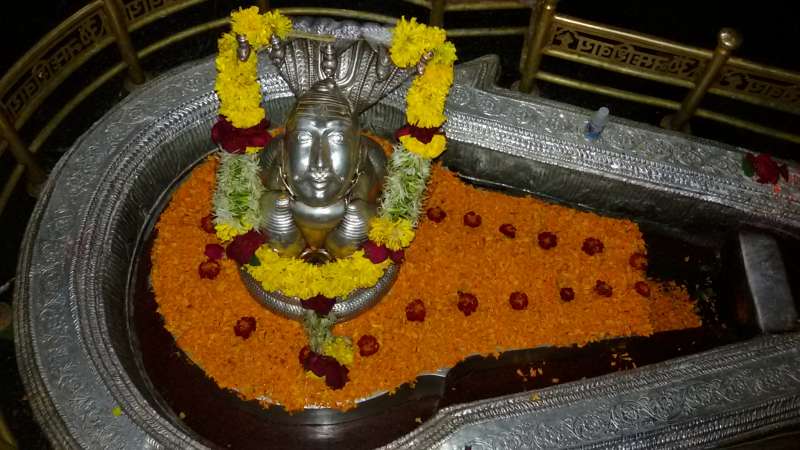
The Bhimashankar Temple is located in the Sahyadri region of Pune, Maharashtra. It lies on the banks of Bhima River and is considered to be a source of this river. The legend about the existence of this Jyotirlinga is related to Kumbhakarna’s son Bhima. When Bhima learned that he was the son of Kumbhakarana who was annihilated by Lord Vishnu in his incarnation as Lord Ram, he vowed to avenge Lord Vishnu. He performed penance to please Lord Brahma who granted him immense power. On achieving this power, he started creating havoc in the world. He defeated the staunch devotee of Lord Shiva- Kamrupeshwar and put him in the dungeons. This angered the Lords who requested Shiva to descend Earth and put an end to this tyranny. A war ensued between the two and Shiva ultimately put the demon to ashes. All the Gods then requested Shiva to make that place his abode. Shiva then manifested himself in the form of Bhimashankar Jyotirlinga. It is believed that the sweat which poured from Shiva’s body after the battle is what formed the Bhima River.
7. Rameshwar Jyotirlinga, Tamil Nadu
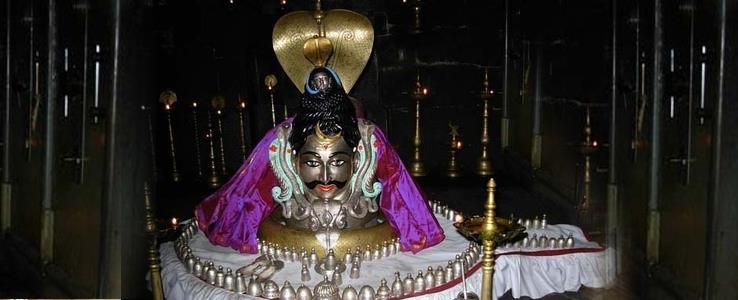
Rameshwar Temple, the southernmost of the 12 Jyotirlingas, is located on the island of Rameshwaram, off the Sethu coast of Tamil Nadu. This temple is popularly known for its architecture, more prominently the long ornate corridors, towers, and 36 theerthams. This has been a time-honoured pilgrimage centre considered by many at par with Banaras. This Jyotirlinga is closely associated with Ramayana and Ram’s victorious return from Sri Lanka. It is believed that Ram on his way to Sri Lanka stopped at Rameshwaram and was drinking water on the seashore when there was a celestial proclamation: “You are drinking water without worshipping me.” Listening to this Ram made a linga of sand and worshipped it and asked for its blessings to defeat Ravana. He got the blessings from Lord Shiva who then turned into a Jyotirlinga and resided at the place for eternity.
8. Nageshwar Jyotirlinga, Gujarat
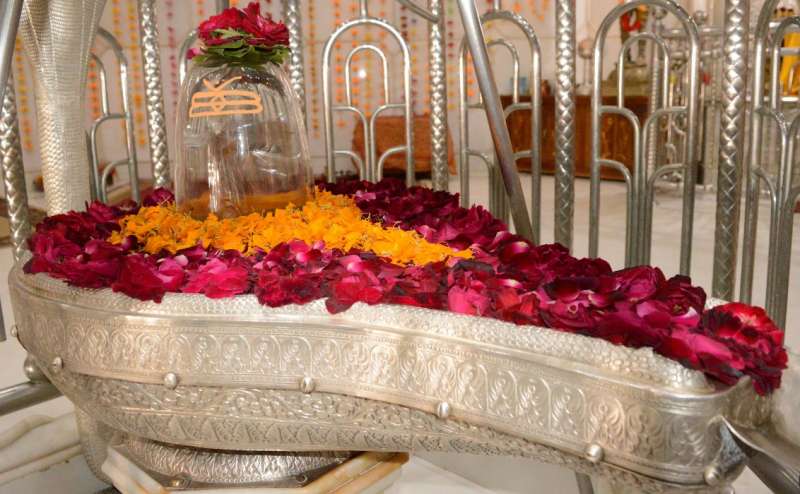
The Nageshwar Temple also known as Nagnath Temple is located on the route between Gomati Dwarka and the Bait Dwarka Island on the coast of Saurashtra in Gujarat. This Jyotirlinga holds special significance as it symbolises protection from all types of poison. It is believed that those who worship at this temple become free of all poisons. According to the Shiva Purana, a Shiva devotee by the name Supriya was captured by the demon Daaruka. The demon imprisoned her with several others in his capital Daarukavana. Supriya advised all prisoners to chant “Aum Namaha Shivaya” which enraged Daaruka who ran to kill Supriya. Lord Shiva manifested in front of the demon and put an end to him. Thus the Nageshwar Jyotirlinga came into being.
9. Kashi Vishwanath, Varanasi
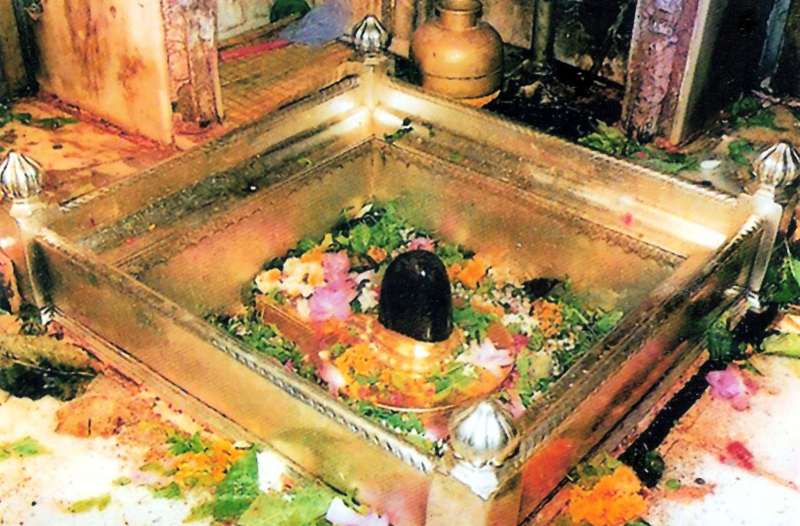
The Kashi Vishwanath Temple is located in the most revered site in the world- Kashi ! It is situated amidst the crowded lanes of the holy city of Banaras (Varanasi). More than the Ghats and Ganga of Varanasi, the Shivalinga remains the devotional focus of the pilgrims. It is believed that Banaras is the site at which the first Jyotirlinga manifested its supremacy over other gods, broke through the earth’s crust and flared towards heaven. This temple is said to be the dearest to Lord Shiva, and the people believe that those who die here achieve liberation. Many believe that Shiva himself resided here and is the giver of liberation and happiness. This temple has been rebuilt several times but always continued to hold its ultimate significance.
10. Trimbakeshwar Jyotirlinga, Nasik
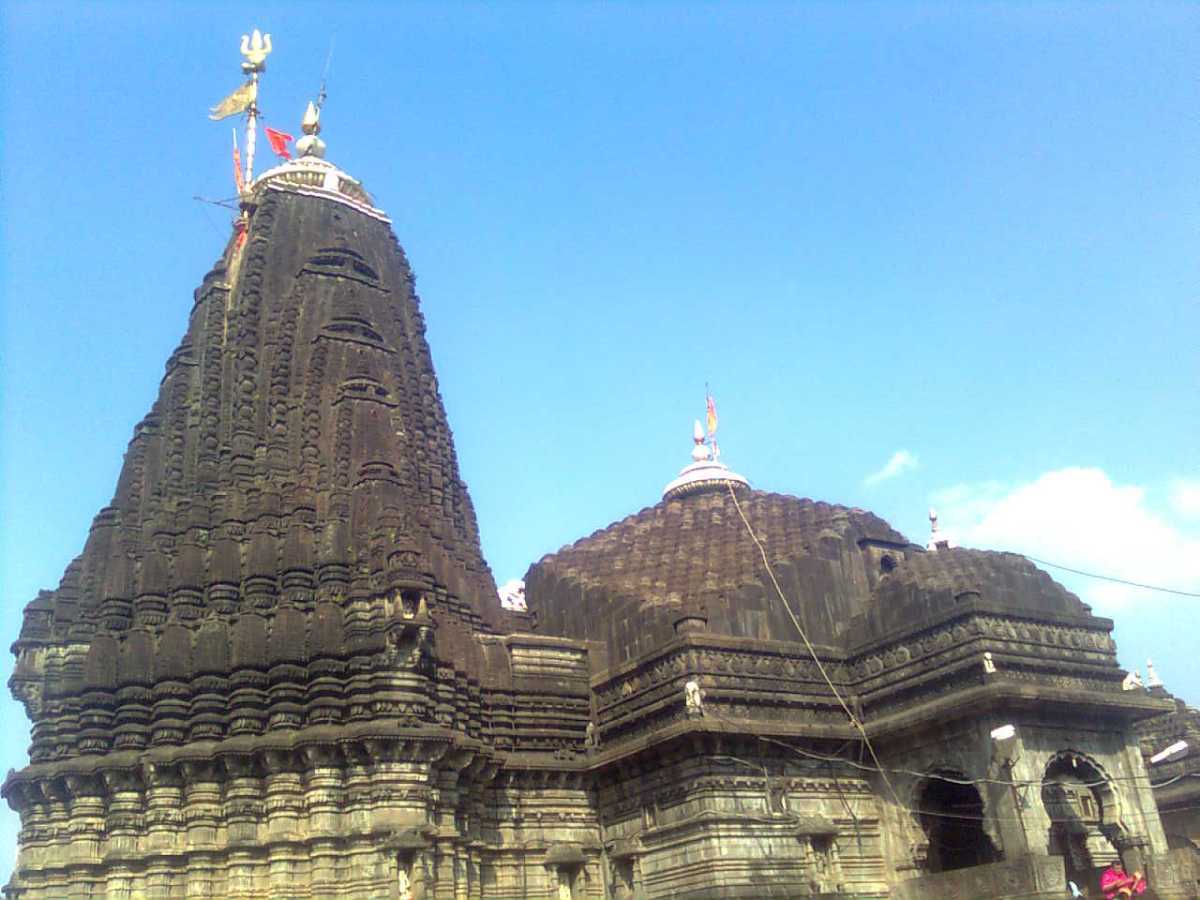
The Trimbakeshwar Temple is located about 30kms from Nasik in Maharashtra near the mountain named Brahmagiri from the river Godavari flows. This temple is considered to be a source of the river Godavari which is known as “Gautami Ganga”- the most sacred river in South India. According to the Shiva Purana, it is on the earnest request of River Godavari, Gautam Rishi and all the other Gods that Shiva decided to reside here and assumed the name Trimbakeshwar. Gautam Rishi earned a boon from Varuna in the form of a pit from which he received an inexhaustible supply of grains and food. The other Gods were rendered jealous by him and they send a cow to enter the granary. The cow was mistakenly killed by Gautam Rishi who then asked Lord Shiva to do something to purify the premises. Shiva asked Ganga to flow through the land to make it pure. Everyone thus sang praise for the Lord who then resided beside Ganga in the form of Trimbakeshwar Jyotirlinga. Hindus believe that this Jyotirlinga in Maharashtra is the one which fulfils everyone’s desires.
11. Kedarnath Jyotirlinga, Uttarakhand
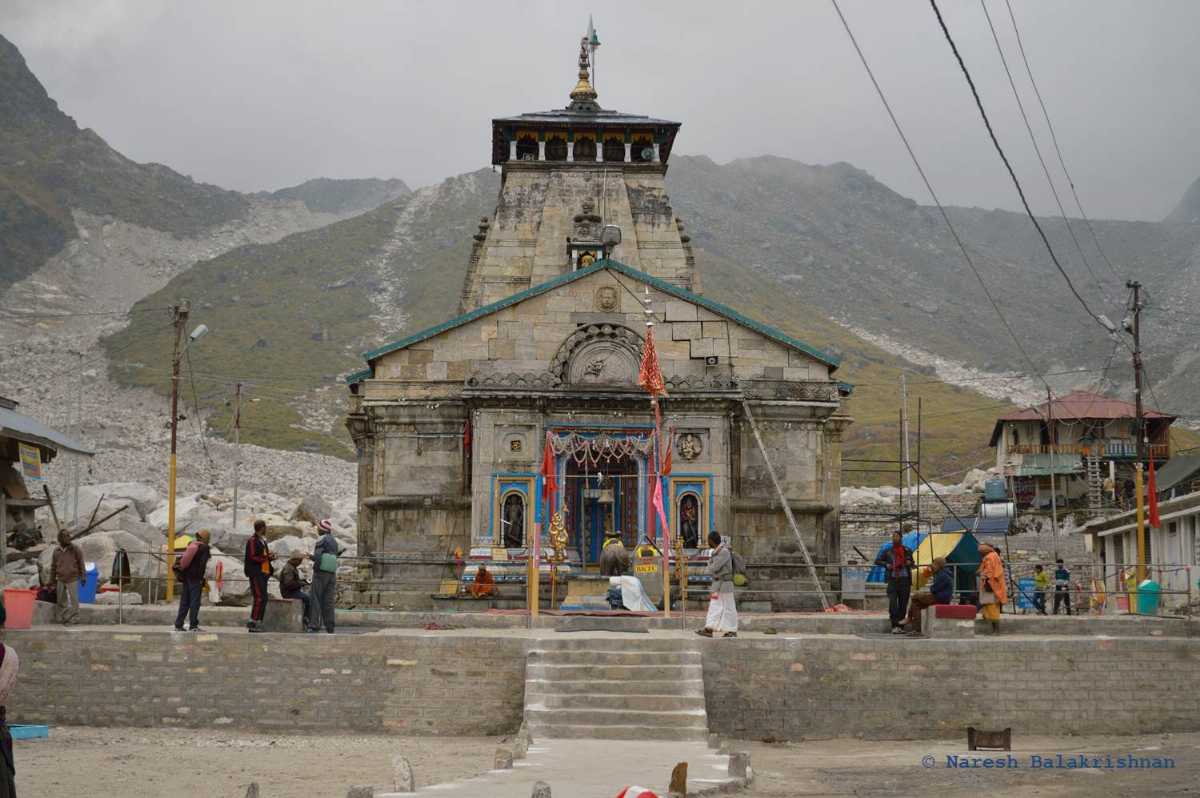
One of the holiest pilgrimage sites in India, the Kedarnath Temple is located on the Rudra Himalaya Range at the height of 12000 feet on a mountain named Kedar. It is approximately 150 miles from Hardwar. The temple enshrining the Jyotirlinga opens only six months in a year. The tradition is that while embarking on a pilgrimage to Kedarnath people first visit Yamunotri and Gangotri and brings the holy water to offer at Kedarnath. According to the legends, pleased by the severe penance of the Nara and Narayana – two incarnations of Lord Vishnu, Lord Shiva took up permanent abode in Kedarnath in the form of this Jyotirlinga. People believe that praying at this site one gets all his desire fulfilled.
12. Ghrishneshwar Jyotirlinga, Aurangabad
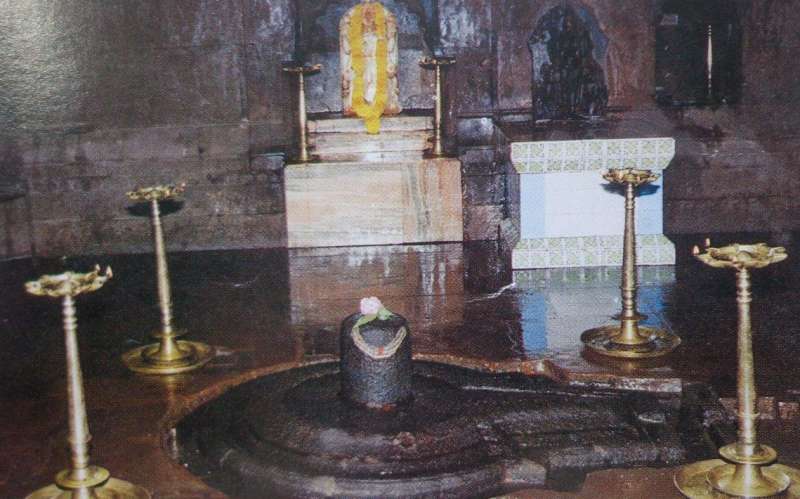
The Ghrishneshwar Jyotirlinga is located in a village called Verul, which lies 20 km from Daulatabad, near Aurangabad in Maharashtra. Located near this temple is the famous tourist site – Ajanta & Ellora caves. This temple was built by Ahilyabai Holkar who also rebuilt the Kashi Vishwanath Temple in Varanasi. The Ghrishneshwar temple is also known by other names like Kusumeswarar, Ghushmeswara, Grushmeswara and Grishneswara. According to the Shiva Purana, a couple named Sudharm and Sudeha resided on the Devagiri Mountain. They were childless, and thus Sudeha got her sister Ghushma married to Sudharm. They bore a son who rendered Ghushma proud and Sudeha jealous of her sister. In her jealousy, Sudeha threw the son in the lake where Ghushma used to discharge 101 lingams. Ghushma prayed to Lord Shiva who ultimately returned her the son and told her of her sister’s deeds. Sudharm asked Shiva to emancipate Sudeha which left Shiva pleased with his generosity. On Sudharm’s request, Shiva manifested himself in the form of the Jyotirlinga and assumed the name Ghushmeshwar.
These Jyotirlingas Can be Clubbed in One Visit
Out of the 12 Jyotirlingas in India, 7 can be visited together since they are located in the neighboring states of Maharashtra, Gujarat and Madhya Pradesh. This makes it quite easy and convenient to visit all of them together. These 7 Jyotirlingas are:
- Somnath Jyotirlinga, Gir
- Nageshwar Jyotirlinga, Dwarka
- Trimbakeshwar Jyotirlinga, Nasik
- Bhimashankar Jyotirlinga, Pune
- Grishneshwar Jyotirlinga, Aurangabad
- Mahakaleshwar Jyotirlinga, Ujjain
- Omkareshwar Jyotirlinga, Khanda
“Naa aadi naa ant uska, wo sabka naa inka naa unka, wahi shunya hai wahi aekaay, jiske bheetar basaa Shivaay”. Visit these Jyotirlingas in your lifetime and keep chanting “Har Har Mahadev”!

0 Comment